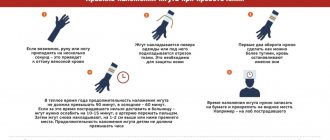State institution of the Republic of Kalmykia
Do not transport the victim yourself if you are sure that qualified medical care will be provided soon. It is also necessary to remember that the less the victim is shifted, the better this will affect his future condition; the victim should not be moved unless absolutely necessary. Transportation of the victim must be carried out only after immobilization of the injured part of the body and provision of first aid to the appropriate extent. The choice of method or method of transportation depends on the nature and severity of the injury, the condition of the victim, the number of Persons providing assistance, the availability of auxiliary devices, the distance of transportation and other conditions.
If the victim is in satisfactory condition and does not have injuries to the lower extremities with typical signs of fractures, he can move independently, but with the obligatory assistance of an accompanying person. The accompanying person throws the victim's arm over his shoulders, holding it at the wrist, and grabs the victim by the waist or chest. A more reliable option is to move the victim between two accompanying persons. Victims with injuries to the skull, chest and abdominal organs, as well as spinal injuries should not be allowed to move independently. The first method of carrying on the back is used when the victim cannot move independently, but can hold onto the rescuer with his hands, clasping his neck, while the rescuer supports the victim’s hips with his hands. In the second method, the victim is held on the rescuer’s back with a “bag”, i.e. The rescuer holds the victim's hands, and the victim's legs hang freely. To carry the victim on the shoulder, the rescuer lifts the victim, holding him in the armpits, and places the lower abdomen on his shoulder. Then he wraps his hand around the victim’s legs and, holding him in this way, carries him. If the weight of the victim is small, then he can be carried by hand. To do this, the rescuer places one hand under the victim’s buttocks and the other under the back, lifts him up and carries him, while the victim wraps his arms around the rescuer’s neck, if his condition allows. It is best to carry the victim using several people. If the victim is conscious, he is carried while sitting in the arms of rescuers. When carried by several people, it is possible to connect the rescuers’ hands into a “lock” - from four, three, two HANDS. When carried on four arms connected in a complex lock, each rescuer takes his left forearm with his right hand, and his partner’s left forearm with his left, creating something like a “seat”. The victim is placed on this “seat” and clasps the rescuers’ necks with his hands. If the victim is severely weakened and cannot hold on to the rescuers’ necks, he needs additional support; for this, a “lock” of three hands is used. In this case, one of the rescuers, usually less strong, clasps his left forearm with his right hand, and his partner’s right forearm with his left. The second rescuer takes the right forearm of the first with his right hand, and supports the victim behind his back with his left. The two-arm “seat” allows rescuers to move upright and support the victim with their free hands.
Carrying the victim “one after another by two rescuers” can be carried out in different ways. In the first option, one of the rescuers stands behind the victim and grabs him under the back and buttocks. The second rescuer, with his back to the first, stands between the victim’s legs and grabs him under the legs and knees. In another option, one of the rescuers holds the wounded man by the armpits. This method of carrying is convenient if the victim is unconscious. Transporting the victim using a chair. This method is used to overcome narrow passages or stairs. The victim is seated on a hard chair, carried by two rescuers, one is behind the victim, the other is facing him. Transporting the victim by dragging. In this way, unconscious victims with injuries to the musculoskeletal system are moved over a short distance, excluding the possibility of transportation under their own power or carrying.
For this you can use a blanket, a piece of tarpaulin, outerwear, etc. The victim is dragged onto the canvas, holding his clothes in the shoulder area, or the necessary material is placed under him. Transportation in this way is best done on a relatively smooth soil surface, so that there are no sharp objects, branches, stones, glass, etc. in the way. Every 3-5 minutes it is necessary to stop to rest and examine the victim. Victims with injuries to the spine and pelvic bones should not be moved in this way. Carrying the victim using a strap. It is a strip of durable fabric about 3.5 meters long, 5-7 cm wide. The material for the strap can be tarpaulin, waist belts, towels, sheets, rope, etc. This method cannot be used for fractures of the hip, spine, pelvis, or upper limbs.
Carrying a victim using a stretcher is the safest way to transport victims. As a rule, emergency medical services have special stretchers. Most often, improvised stretchers made from scrap materials are used to save the victim. To do this, you need to have on hand two poles 2.7-3.0 m long (you can use skis), which are connected to each other by spacers at a distance of 60-70 cm. Then they are rewound with fabric strips or ropes so that a kind of “bed” is formed. Instead of ropes, you can use a coat or raincoat. Doors, tabletops, wide boards, etc. can also be used as stretchers.
Lifting the stretcher must be carried out simultaneously by all rescuers. Rescuers carrying a stretcher must walk out of step, with short steps and not very quickly. The person walking in front must warn the person behind about obstacles encountered. The victim should be monitored by someone walking behind. When climbing uphill, to level the stretcher, the person walking in front lowers the stretcher as much as possible, and the person walking behind tries to raise it as high as possible; when descending from the mountain, the opposite is true. The victim must be carried feet first down the stairs and out of the vehicle and head first up the stairs and into the vehicle. If the chest or neck is damaged, the victim must be transported in a semi-sitting position (the angle between the limbs and the torso should be 45°). Victims with abdominal injuries are transported on stretchers in a supine position. If the spine is damaged, the victim must be transported in a supine position on a rigid base (board, boards, etc.). An unconscious victim must be transported lying on his side or stomach, thus preventing vomit and blood from entering the lungs. In case of burns to the back and buttocks, the victim is transported lying on his stomach. Victims with damage to the pelvic bones, if a fracture of the pelvis or spine is suspected, are transported in a supine position with the hips and knees bent and legs spread to the sides (“frog” pose). When transporting a victim with massive blood loss or if internal bleeding is suspected, it is advisable to raise the foot end of the stretcher or the victim’s legs by placing a cushion under them.
Behavior rules
Methods for extracting and moving the victim
Sometimes a situation may arise when it is necessary to extract the victim. It should be remembered that emergency removal of victims from a car or other hard-to-reach place is carried out only if there is a threat to his life and health and it is impossible to provide first aid in the conditions in which the victim is located. In all other cases, it is better to wait for the arrival of emergency medical services and other services involved in eliminating the consequences of the incident.
Extraction of the victim is carried out in certain ways.
If the victim is conscious, his emergency extraction is carried out as follows: the hands of the first aid participant are held under the armpits of the victim, his forearm is fixed, after which the victim is removed out.
When removing a victim who is unconscious or suspected of having a cervical spine injury, it is necessary to secure his head and neck. In this case, one of the hands of the first aid participant fixes the victim’s head by the lower jaw, and the other holds his opposite forearm.
After extraction, the victim should be moved to a safe distance.
You can move the victim to transport or to a safe place in various ways, depending on the nature of the injuries and the condition of the victim, the number of participants in the movement and their physical capabilities.
1. Move the victim alone with support. Used to move lightly injured and conscious persons.
2. Moving the victim alone by dragging. It is used to move victims of significant weight over close distances. It is not advisable to use in victims with lower extremity injuries.
3. Carrying the victim alone on his back. Can be used to carry light victims. Not used for carrying unconscious victims.
4. Carrying the victim in your arms. Used by persons who have sufficient physical strength to use this method. This method can be used to transport unconscious victims. It is undesirable to transfer this way to victims with suspected spinal injury.
5. Carrying the victim alone on the shoulder. When carrying in this way, you should hold the victim's hand. This method is not used when carrying victims with injuries to the chest, abdomen and spine.
6. Carrying the victim together with a four-handed lock. Hands are taken in such a way as to clasp the wrist of the other hand and the hands of the assistant. The fixation of the hands must be strong enough to hold the victim.
After the “castle” is formed, the victim sits on it, after which he is lifted and carried. The victim can hold on to the shoulders of the people carrying him.
7. Carrying the victim together in a three-handed position with support under the back. When using this method, one of the first aid participants does not lock his hand, but places it on the other’s shoulder. The victim can lean on this arm when being carried. In this way, victims who are at risk of losing consciousness or victims who cannot hold on to a four-handed lock are carried.
8. Carrying the victim by two hands and feet. When carried in this way, one of the first aid participants holds the victim by the forearm with one hand, putting his hands under the armpits, and the other under the knees.
9. Carrying a victim with suspected spinal injury. To carry a victim with a suspected spinal injury, several people are needed who, under the direction of one of the first aid participants, lift and carry the victim. When carrying, one of the first aid participants must fix the head and neck of the victim with his forearms. It is more convenient and safe for a victim with suspected spinal injury to be carried on a hard, flat surface (for example, on a backboard).
Rescue and transportation of drowning people
Saving a drowning person is the work of the drowning person himself. This expression is true in many areas of life, but not in its literal sense. A person can do a lot to prevent a dangerous situation on the water, but when he becomes this very “drowning” person, he can no longer help himself.
What to do if you saw a drowning person? At this moment, it is important to urgently take measures to save him. After all, it only takes a few minutes for a person to drown. It is extremely important to assess the situation as soon as possible and choose the optimal method of providing assistance. In such a situation, you need to remember that the reward for the actions taken can be human life.
To begin with, it is important to understand that not every drowning person will call for help and flounder violently in the water. Spasms of the vocal apparatus, interruptions in breathing and panic can prevent a person in trouble from making any sounds to attract the attention of potential rescuers.
The fact that a person needs outside help can be indicated by his staying in one place, periodically going under water and traceable panic in his movements and facial expressions. If you are not sure that someone is really drowning, try to call out to them or draw the attention of others. When confirming this assumption, it is necessary to remember what actions are performed when rescuing a drowning person.
We determine the method of rescue.
Rushing into the water to help a drowning person is a noble cause, but not always justified. This should not be the first thing that comes to your mind in this situation, especially if you are not a very experienced swimmer. Better take the following steps:
- Invite others to help.
— Determine whether it is necessary to jump into the water to save a drowning person or whether assistance can be provided from the shore, boat or pier.
- Find objects that can help in rescue.
What should you do if you notice a drowning person close to the shore, pier, boat or at the edge of the pool?
Option No. 1 If the distance and condition of the drowning person allows, you can grab his hand. To ensure a reliable grip, you need to loudly and clearly explain to the drowning person that he needs to grab your hand as tightly as possible. Try to speak in a calm but confident voice so as not to increase the panic of the person you are rescuing.
To avoid ending up in the water, take a lying position, spread your arms and legs wide and ask someone to hold you. Never provide assistance while standing or crouching. Do everything possible so that saving a drowning person does not become a fight with death for you too.
Option No. 2 If it is impossible to reach the victim with your hand, take an oar or a rescue pole, find a strong stick, branch or other strong object nearby and, holding it out to the drowning person, explain that he must grab it tightly. If a person, tired of the struggle for life, does not have the strength to hold on to something, he will still have to jump into the water and help him (an option is acceptable if there are at least two rescuers).
Option No. 3 Any non-sinking object at hand can serve as an excellent service when rescuing a drowning person. A lifebuoy, a piece of foam plastic, wood, or even a plastic bottle will help hold such a person on the water. If possible, tie a string to whatever you will be using. With its help, it will be much easier to pull the victim out of the water.
However, when throwing a rescue object into the water, be careful not to hit a person. Try to time the throw so that the current carries the object to the drowning person. If the victim is weakened and cannot hold on to an object thrown at him, it is necessary to swim up to him and help him do this.
What should you do if you notice a drowning person far from the shore, pier, boat or edge of the pool? In this case, the methods of saving a drowning person are not so varied.
If you are an excellent swimmer and have good physical shape and stamina, you can safely throw yourself into the water, but it will be better to ask someone to swim with you for backup.
If you are not confident that you are able to cope with the task, you should not take risks. The best thing you can do in such a situation is to call for help.
If you are in a public place, there is probably at least one person around you who can help and knows how to do it.
While the rescue is being organized, call an ambulance and the Ministry of Emergency Situations.
Approaching a drowning man
Trying to save a panic-stricken drowning person can put you in a pretty dangerous situation. While fighting for life, he may not behave quite adequately. The state of shock in which he is in may prompt him to take actions that threaten not only his own life, but also the life of his savior.
It is possible that the drowning person will grab onto the rescuer, interfering with his freedom of movement and plunging both under water. In view of such danger, it is better to swim up to a drowning person from behind, so as to remain unnoticed by him until the last moment.
If the action takes place on a river, dive into the water in a place where the current will help you swim to the drowning person. If possible, take with you a lifebuoy or other object that you can grab onto to stay on the surface of the water.
Do not jump into the water wearing clothes, as their heaviness after getting wet will complicate your movement, and it will be easier for a drowning person to cling to you.
Transporting a drowning person
Behavioral tactics when transporting a drowning person depend on his condition.
If he is calm and adequate, you can easily transport him after he firmly grasps your shoulders.
If a person in a panic randomly grabs you, first try to relax and dive under the water with him. Then, when he releases you and rushes towards the surface, you will have a chance to grab him correctly.
If the victim still clings on, the rescuer must free himself from his grip, even using force. When the hands are grabbed, they sharply turn towards the thumbs of the drowning person, who is pushed away with his feet. When grabbing the neck from the front, a push is made to the chin while pinching the nostrils. When the neck is pinched from behind, the rescuer sharply turns his elbow upward and dives under it. Having freed himself, the rescuer turns the victim with his back to himself and pulls him to the shore.
The ideal grip option is to place a hand that is comfortable for you under the drowning person’s arm from the back and grab his opposite shoulder. In this case, you will have to swim sideways, using one free hand.
If a person behaves calmly, he can be transported in other ways.
For example, while lying with your back on the water, you can use one or both hands to hold his chin above the water. If you hold your chin with one hand, you can use the other for rowing. Another option is to place your strong hand under the same hand of the drowning person and use it to support his chin.
You can hold a drowning person from behind by the hand lying on his chest and passing through the armpit of the second hand.
If a person, due to loss of consciousness or exhaustion, has sunk to the bottom and lies face up, they swim up to him from the side of his head, grab him under the armpits and float to the surface. In a face-down position, the approach is made from the legs, the grip is again from the armpits, and when surfacing, the drowning person turns over face up.
The best way to rescue a drowning person will be determined by the situation.
We save a drowning man in winter.
The algorithm for saving a drowning person under whom the ice has fallen is completely different. It is important here to call rescuers and an ambulance without wasting a minute.
While they are getting to the scene of the accident, you can gently help the victim out of the icy water. To do this, you need to arm yourself with a stick, belt, scarf or other object, the other end of which the victim can grab onto.
The victim should be approached from the side of the thickest ice. This should only be done by crawling, with your arms and legs spread wide. When he can grab the edge of the object you are using, carefully, in smooth movements, move back, dragging him along with you.
When getting to the shore on the ice, try not to get close to each other, crawl slowly, avoiding sudden movements.
After removing the victim to a hard surface, it is necessary to begin providing first aid until specialized rescue services arrive.
In case of an emergency, call 24 hours a day to the following numbers: Ministry of Emergency Situations - 01, EDDS - 112










